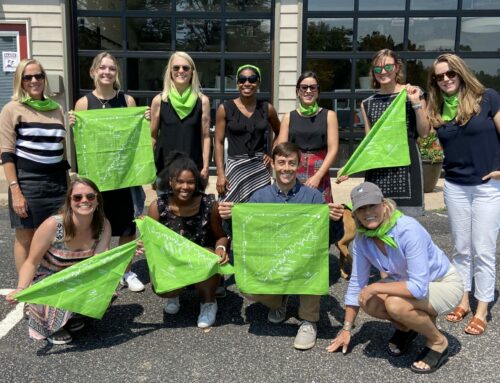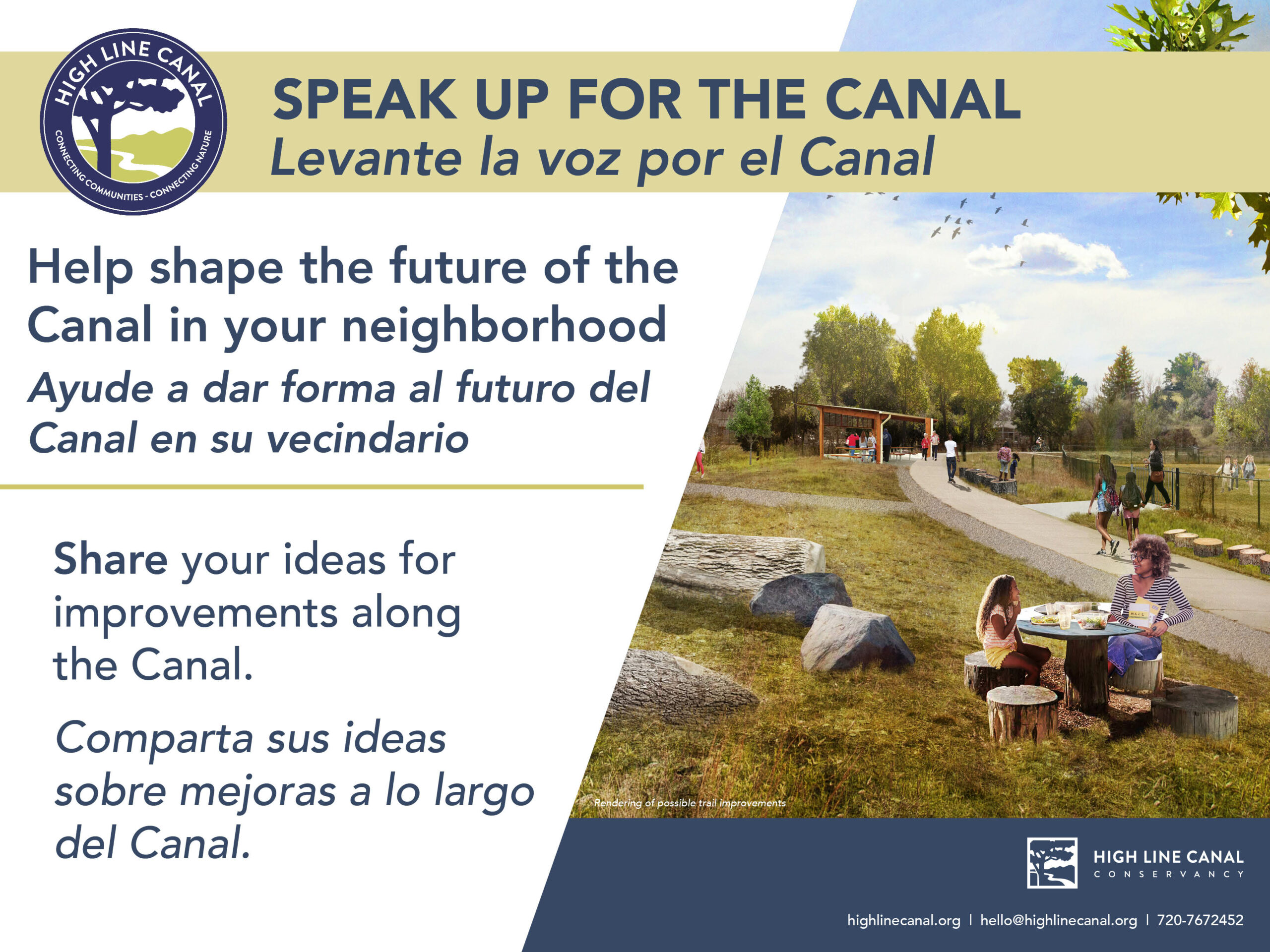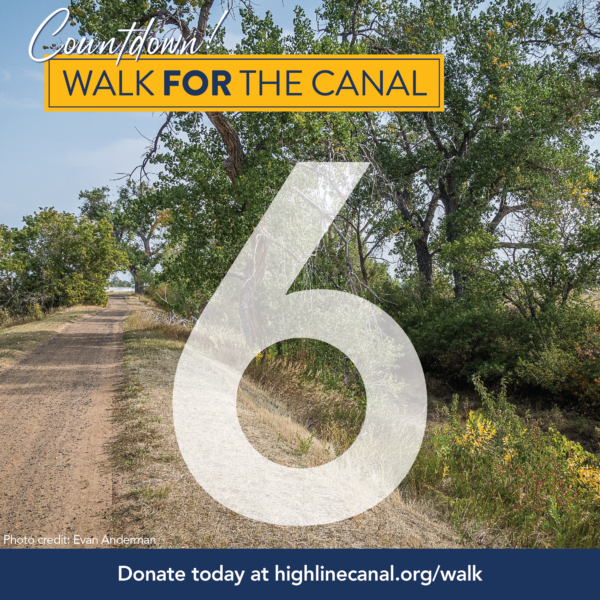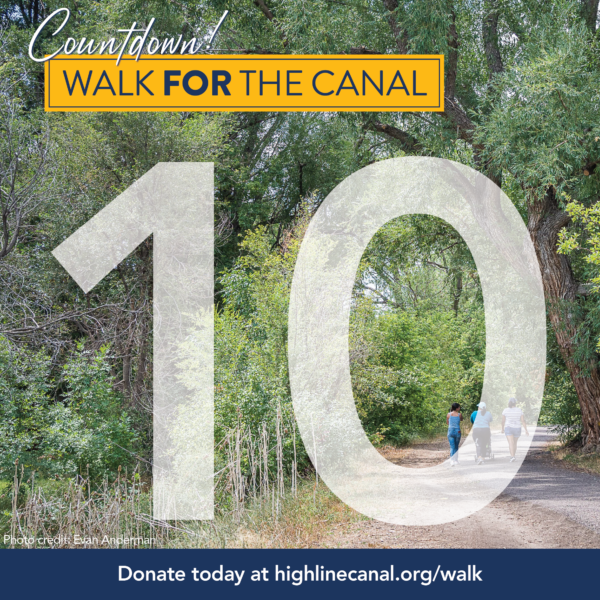As part of Walk FOR the Canal Week we are holding a free family-friendly event, Dogs + Donuts, in Bible Park on Saturday, June 25. One of the many activities is a self-guided walk around Bible Park and a scavenger hunt! Come to Bible Park and grab a card during the event (9-11:30 a.m.) or stop by on your own to play.
How to Participate:
- Pick up your self-guided walk map & scavenger hunt card during Dogs + Donuts (Bible Park, 6/25, 9-11:30 a.m.) OR use the list below (to complete the self-guided walk, loop Bible Park on the Canal and turn onto Yale Ave. to complete the Canal loop).
- Go on the self-guided walk & find all the items on the scavenger hunt.
- Take a photo of you and/or your dog with each item & post your images on social media (Facebook and/or Instagram – can be one post with multiple photos), tagging us & using #WalkFORtheCanal2022.
- Don’t have social media? Email your photos to us at walk@highlinecanal.org by noon on Sunday, June 26.
SCAVENGER HUNT
1. Canal Channel
The High Line Canal was built in the 1880’s to bring water to the growing region after the gold rush of 1859. The Canal was used to irrigate over 20,000 acres of other agricultural land through 165 headgates. However, the Canal is an inefficient means of irrigation delivering: 60-80% of water diverted into the Canal seeps into the ground or evaporates prior to reaching a water customer. As Denver Water reduces its reliance on the Canal for irrigation deliveries, the High Line Canal Conservancy and its partners are working to bring new life to the Canal by embracing its potential to function as a stormwater management system, a regional recreational trail, and an urban ecological corridor.
2. Chainsaw wood carving
Master carver, Faye Braaten, known as Chainsaw Mama carved this old cottonwood stump. The carvings in Bible Park is known as Foxy and was brought to life in 2019 thanks to support from Councilwoman Kendra Black. Chainsaw Mama has done another carving east of Eisenhower Park near Holly Street from a downed cottonwood tree. Now it is a place to rest as well as a trail enhancement enjoyed by trail users.
3. Cottonwood tree
More than 40% percent of the Canal’s tree canopy is made up of cottonwoods. Many of these trees are over 100 years old and are nearing the end of their natural lifespan. Cottonwoods require more water than this historic irrigation ditch now sees. Therefore, the Conservancy is now working to plant new trees and vegetation, focusing on drought-tolerant and native species, as well as other landscape enhancements.
4. Ditch rider road
The Canal was hand dug in the 1880s to move irrigation water from the South Platte River to the plains. The irrigation canal was maintained by “ditch riders” who used the dirt road built alongside the channel to patrol the Canal, open and close headgates, and perform maintenance.
5. Fauna
The Canal is home to over 190 bird species, 25 mammal species and 15 reptile species! Find some wildlife and snap a photo. Dogs can be excellent at sniffing our wildlife – can your pup find any?
6. Flora
Native plants are uniquely adapted to Colorado’s climatic and environmental conditions and provide a host of ecosystem services. Native plants have coevolved with Colorado’s pollinators and animals over millennia and provide critical habitat and food for our urban wildlife. Native plants also help stabilize soil, filter pollutants and provide a beautiful backdrop for recreating along the Canal corridor! Spot some of our favorites and snap a picture:
- Smooth Rose (Rosa blanda)
- Identification: Shrub with thorns on stems. Leaves with serrated edges. Flowers are pink.
- Abundance: found across the Canal, occurring in all 5 character zones
- Wildlife: is a major source of nectar for bees, provides food & shelter for birds and small mammals
- Restoration: stabilizes soil / can help control erosion on the steep Canal banks
- Ethnobotanical uses: Rose hips are an excellent natural source of vitamin C. Indigenous People have used the roots, stems, leaves, flowers, and hips for food and therapeutic materials.
- Coyote Willow (Salix exigua)
- Identification: Shrub. Leaves are narrow with smooth edges, sage-colored. Flowers in cylindrical yellow clusters
- Abundance: found across the Canal, occurring in all 5 character zones
- Wildlife: provides shelter for birds and mammals
- Restoration: excellent soil stabilizer and important species along streambanks
- Ethnobotanical uses: Wood is used for building and basketry. Plant is used medicinally—bark contains salicin, which acts in a similar manner to aspirin
- Green Needlegrass (Nassella viridula)
- Identification: Bunchgrass 18-36 inches tall. Seeds are compact with long bristles (called awns) extending from each seed.
- Abundance: found across the Canal, occurring in all 5 character zones
- Wildlife: Seeds provide food for small mammals and songbirds
7. Mile marker
The High Line Canal Conservancy has placed new mile markers across the 71-mile trail. These Colorado red sandstone markers have been reoriented to follow the trail rather than the Canal itself, so the locations differ slightly from the old mile markers. This is part of efforts to improve signage along the corridor in order to build awareness, improve access, and connect users to new parts of the trail.
8. Wayfinding Kiosk
This year, 150 new signs are being installed across the Canal. These new signs will include crossing signs that identify street crossings, wayfinding signs to help connect to destinations along the trail and kiosks with maps to help orient users and inform them about rules of the trail.















